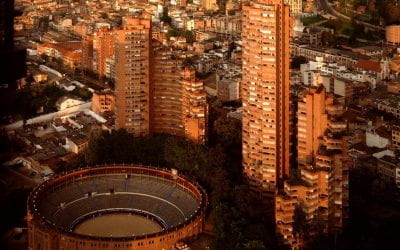On Haiti
Rebuilding Social and Urban Fabric
Emergency and planning become one word.
While dealing with emergency in Haiti, planning for the future must take place simultaneously.
Taking care of survivors, providing them with food, water, medicine and basic shelter, while patrolling to avoid looting and real risks of epidemic breakouts are huge necessities. But so is thinking about reconstruction and its architectural shape.
To think and to act become one single verb.
To accomplish such a degree of coordination, an ad-hoc technical and managerial team should be appointed to lead the planning process. Due to the lack of professional resources, aggravated by the emergency, foreign specialists with knowledge of similar contexts and situations must join efforts with the available local personnel.
There is no room for traditional planning.
I’m not making vague ivory-tower suggestions here. Like Haiti, Venezuela, my country, suffered a devastating natural disaster in 1999. I was heading a rehabilitation team for Venezuela’s coastal littoral, after dramatic floods ripped up houses and literally reshaped the coastline and beaches. What I applied to the experience then was the importance of incorporating decisions that influence the long-term development of the area affected by the disaster with decisions that alleviate immediate tragedy.
Haiti’s reconstruction process should start right away. The on-site decision-making team should exhaust urban planning and design strategies. Decisions should be made on a daily, sometimes hourly, basis, drawing from a flow of information from specialists and common citizens alike, working in an orchestrated manner.
This highly experienced and motivated team of people from many different disciplines—from planning, design and infrastructure to geology and seismology to sociology, law, communication and finance—should also provide technical guidance. Short-term responses should be orchestrated to shape the future. Uncoordinated actions, without a comprehensive vision, lead to inefficient results and long-term problems. The team should be able to ask the right questions and to get immediate answers.
When tragedies strike, it is within human nature to respond immediately and try to help any way possible, even risking our own lives. Capturing the momentum of this good will will be crucial for the reconstruction of Haiti. Capitalizing on financial and human resources and putting them to work effectively require an organization able to envision goals and to invest these resources efficiently. Corruption is also a critical factor to be aware of. It may distort the outcomes of the proposals and deviate funds badly required for the rehabilitation process.
The participation of academia, grass root movements and institutions perceived by the community to be trustworthy offer a neutral framework to deal with complex technical, managerial, and political situations, in which so many actors and interests are at play.
In such a poor and devastated environment, some key decisions have to be made: locating and designing temporary shelters, which tend to become permanent; connecting new with recoverable existing infrastructure to rehabilitate the existing urban fabric or creating new urban form when more appropriate; reconstructing iconic spaces and buildings to preserve urban memory; reactivating the real-estate market by recognizing preexisting property values; taking advantage of local technologies and introducing new ones to better cope with future similar events; and considering alternative solutions that result in multiplying job opportunities, reactivation of the economy and other means of sustainable growth. If all these decisions point in the same direction, they will facilitate the conditions to rebuild the social fabric.
Community participation is a crucial component for the rehabilitation of existing districts and/or to determine their (re)location. Communities, in general, tend to be quite resilient and can devote much energy and labor towards reconstruction, with the proper guidance. Rebuilding social fabric means preserving and enhancing social ties and relations, a difficult task in Haiti where thousands of lives were lost.
Catastrophic events like the Christmas Day earthquake are special opportunities to introduce new technical, managerial, legal and social paradigms. It is crucial to preserve the collective memory, as well as to tap special resources of multilateral organizations and donations. Adequate expertise, coordination, and transparency are necessary to guarantee effectiveness. The particular severity of the Haitian drama requires creative and non-conventional solutions. It is a unique opportunity to reshape Haiti’s future.
For ways some architects are thinking about post-earthquake Haiti, see http://architectureforhumanity.org/updates/2010-01-13-haiti-quake-appeal-long-term-reconstruction.
Spring | Summer 2010, Volume IX, Number 2
Oscar Grauer holds two degrees from Harvard University, and was 2001 Cisneros Visiting Scholar at the David Rockefeller Center for Latin American Studies. He directed the team appointed by the Venezuelan Government to manage the recovery efforts after the disastrous 1999 floodings in the Litoral Central de Venezuela.
Related Articles
Architecture: Editor’s Letter
For years, readers have been commenting on the printed edition of ReVista: “How beautiful!” Now here’s a website to match, thanks to the efforts of the design firm 2communiqué and Kit Barron of DRCLAS. It’s not only a question of reflecting the aesthetics of the printed…
Working in the Antipodes
I was asked by ReVista to write an article on my own work, specifically about the fact that I do simultaneous work on social housing and high-profile architectural projects, something that is, to…
Three Tall Buildings
I used to hate the three tall towers that thrust against the verdant mountains. I used to think that the red brick towers dug into the landscape, belonging to some other city and some other space, created a scar of modernity…




